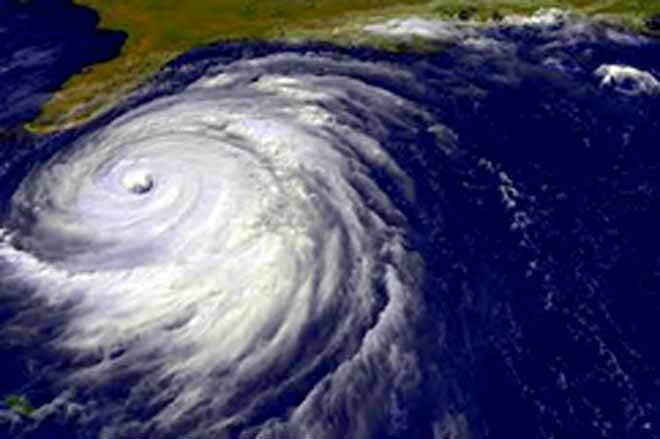Baku, Azerbaijan, August 28
Trend:
The oldest questions of the past decade, of whether the global warming exists and, if so, affects the climate change, resurface once again as the category 4 Hurricane Harvey approaches the coastline of the United States.
The National Oceanic and Atmospheric Administration (NOAA) of the United States Department of Commerce defines a hurricane as “a tropical cyclone, originating over tropical or subtropical waters with organized deep convection and a closed surface wind circulation about a well-defined center,” usually originating “in the Atlantic, Caribbean Sea, Gulf of Mexico, or eastern Pacific, in which the maximum 1-minute sustained surface wind exceeds 64knots (74 mph; 119 km/h) or greater.”
All-in-all, in the past 2 centuries, starting from 1965 up until 2016, the US National Hurricane Center (NHC) has listed almost 50 Hurricanes and Tropical Storms which had caused damages of $1 billion and above. Out of them, 16 Hurricanes, from 1967 to 2016, were category 5, 13 (from 1965 to 2008) – category 4, 10 (from 1983 to 2012) – category 3, 3 (from 1974 to 2010) – category 2, 5 (from 1972 to 2013) – category 1, and 3 storms (from 1994 to 2011) were categorized as tropical.
The costliest hurricane ever recorded in the Atlantic was the category 5 Hurricane Katrina, which struck the coastlines of Mississippi and Louisiana, after brushing the tip of Florida, on 23-30 August of 2005, causing roughly $108 billion in property damage and 1,836 confirmed casualties. The most deadliest tropical cyclone was category 5 Hurricane Mitch, striking the Central America, Yucatan Peninsula and the coast of South Florida, with the winds of up to 285 km/h, on October 22 – November 5 of 1998, causing estimated 11,000 dead. The costliest recent was the Hurricane Matthew, which struck the coastlines of Haiti, Cuba, and eastern United States, causing $15 billion in damages, in September-October 2016.
Scientists are still cautious in relating the global warming with the increase of hurricane numbers or their strength. Princeton University Geophysical Fluid Dynamics Laboratory (GFDL) in its March 17, 2017 Global Warming and Hurricanes Overview stated that, “it is premature to conclude that human activities–and particularly greenhouse gas emissions that cause global warming–have already had a detectable impact on Atlantic hurricane or global tropical cyclone activity, [because] the historical Atlantic hurricane record does not provide compelling evidence for a substantial greenhouse warming-induced long-term increase.” Nonetheless, GFDL argues that, “human activities may have already caused changes that are not yet detectable due to the small magnitude of the changes or observational limitations, or are not yet confidently modeled (e.g., aerosol effects on regional climate).”
CNN had already reported that, “workers at 39 offshore petroleum production platforms and an oil rig in the Gulf of Mexico were evacuated in anticipation of Hurricane Harvey.” Taking into consideration that according to the US Energy Information Administration’s information the Gulf of Mexico accounts for United States’ 17 percent of crude oil and 5 percent of natural gas total production, and “over 45 percent of total US petroleum refining capacity is located along the Gulf coast, as well as 51 percent of total US natural gas processing plant capacity," one may argue that Harvey will have a substantial effect on the US and global economy.
It has already been reported by Reuters that, “oil prices rose nearly 1 percent on Friday as the dollar fell and the US Gulf Coast braced for Hurricane Harvey, which could become the biggest storm to hit the United States mainland in more than a decade.”
On the background of unveiling events US JP Morgan analysis prognoses that, “Hurricane Harvey looks set to disrupt the US Gulf Coast crude and product markets in the coming days and possibly weeks.”
Meanwhile, Russian Sovcomflot’s 984-foot tanker Christophe de Margerie, transporting liquefied natural gas (LNG), had completed the trip from Norway to South Korea, through the North Sea Passage(NSP), on Thursday of last week. The ship had finished its passage, without the aid of specialized ice-breaking vessels, in just 19 days. This is 30 percent faster than the regular route through the Suez Canal, and as the company said “it’s auguring the future of [NSP] shipping, as global warming melts the sea ice.”
To sum up, the decade-old-questions of the global warming and its effects will probably be answered by the scientific community. One would hope that it would happen sooner rather than later.






